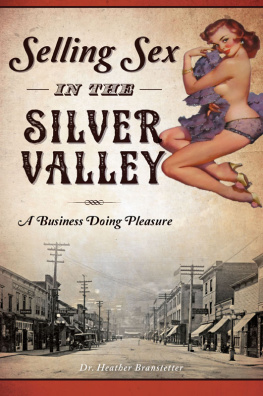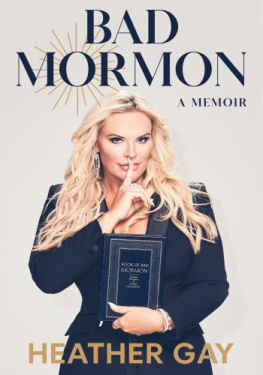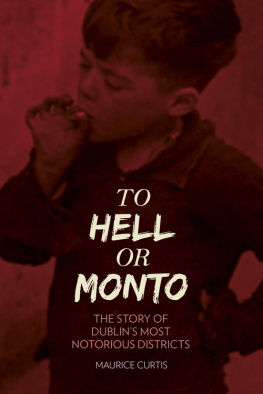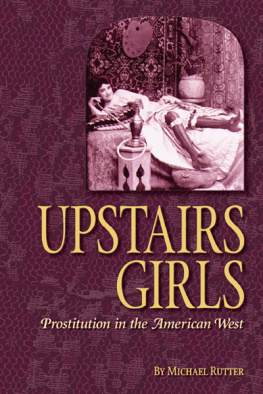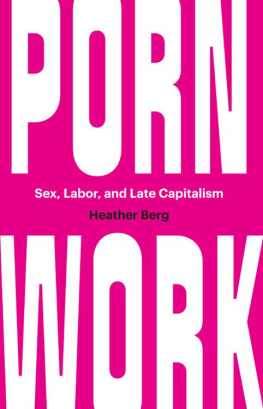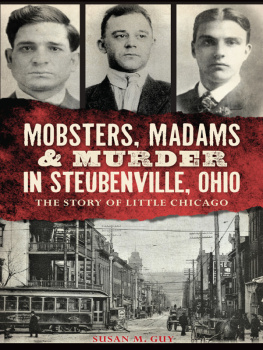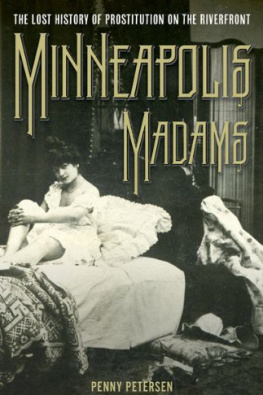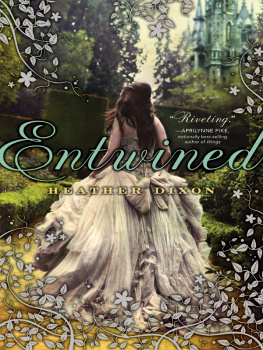

Published by The History Press
Charleston, SC
www.historypress.net
Copyright 2017 by Heather Branstetter
All rights reserved
Front cover, bottom: Wallace, Idaho, looking south along Sixth Street. Historic Wallace Preservation Society. Front cover, top: Pinup girl from 1962 Lux Rooms/Plaza Rooms calendar. Oasis Bordello
Museum display; photo by Heather Branstetter.
First published 2017
e-book edition 2017
ISBN 978.1.43966.071.3
Library of Congress Control Number: 2016961715
print edition ISBN 978.1.46713.656.3
Notice: The information in this book is true and complete to the best of our knowledge. It is offered without guarantee on the part of the author or The History Press. The author and The History Press disclaim all liability in connection with the use of this book.
All rights reserved. No part of this book may be reproduced or transmitted in any form whatsoever without prior written permission from the publisher except in the case of brief quotations embodied in critical articles and reviews.
For Joann Branstetter and Mom and Dad.
In memory of Ken Branstetter.
To the women and men of Wallace, Idaho, past, present and future. I am thankful for the opportunity to serve this community.
Contents
Preface
The goal of this book is to relate the way the Silver Valley valued and validated its historic traditions of prostitution, drinking and gambling in accordance with hardrock miners work hard, play hard approach to life. Much of our communitys past has been preserved in memories and stories passed on through oral history tradition, but if these stories are not written down, our history fades when memory keepers pass away. I have tried to honor the multiple perspectives I encountered during my research.
Sex work in Wallace, Idaho, was decriminalized, socially acceptable and even embraced by community members from 1884 to 1991. It was also an equilibrium that balanced complex power relationships among madams, sex workers, town leaders, citizens and clients. The women who worked in the Silver Valleys rooms provided a valued service by offering sex, companionship and discretion to rough mining towns in need of stability.
In what follows, I offer a variety of viewpoints to show how our collective memories include negotiated values and culture created through myths, oral histories and official written records. I incorporated information from published sources, archival materials and interviews with a range of people. The book organized itself according to chronology and research materials: the first part is written more like a traditional history while the second two parts feature more primary sources with less interpretive analysis. I tried to balance the personal privacy of those who lived this history with my feeling that we should preserve their stories and knowledge for future generations. Since sex work is still a stigmatized issue, thirty-eight of ninety-nine oral history research participants requested anonymity. I recorded most of the interviews for quotation accuracy but only name participants according to their personal preference.
For those who want content warnings, I should mention what may or may not be obvious: this book discusses sex in some detail, especially parts two and three. Drug use, violence and sexual assault are also a part of the narrative at times. Certain classes of people will consider some of the language in this book inappropriate for polite conversation. Reader discretion is advised.
Versions of the information presented here have been published in Rhetoric Society Quarterly and Peitho. I have also shared this research on the public radio show With Good Reason and my website, abusinessdoingpleasure.com, where you can read more.
Acknowledgments
There are many people who contributed to this project in a huge way. Mitch Alexander, John Amonson, Rich Asher, Dick Caron, Kristi Gnaedinger, Dee Greer, Tom Harman, Jack Johnson, Richard Magnuson, Jim and Peggy McReynolds, Bill Mooney, Cathleen Ryan and Chase Sanborn really helped make this book happen. I am also grateful to Tammy Copelan at the Wallace District Mining Museum; Shauna Hillman at the Northern Pacific Depot Museum; Eva Truean, Linda Harbuckle and Zach Darrah at the Oasis Bordello Museum; Bernie Ludwick and Annette Kologi at the Wallace Public Library; Marla Anson and Debbie Ruggles at the District Court; Joanne Jaggard and Penny Michael at Wallace City Hall; Marilyn Hinsz in the Shoshone County Assessors Office; Janice Shiner in County Records; Don Hoffman and Mark Burmeister at City Limits Pub; and Mike Murray and Karen Mooney at Rossi Insurance. I often wrote at the 1313 Club and was grateful for their delicious coffee and breakfast. The Dayrock offered a nice place to work in the evenings. Everyone at Wallace Brewing Company supported this project in more ways than they know! Marcy Hayman and Callie Hegbloom, thanks for your encouragement. Artie Crisp, Julie Foster and Julia Turner at The History Press, I appreciate your interest, attentive reading and guidance. I cant thank you all enough.
I acknowledge research participants by name in the bibliography if they have chosen to be on the record, but there were also many people helping me off the record. Some of their words are quoted anonymously in this book. There were also many people I did not quote directly, but they influenced my thinking, offered important insights or helped me with the research. Here is a list of those who are not otherwise acknowledged in the record of citations: Mike and Sam Achord; David Albertini; Clyde Albright; Hollis Anderson; John Andrasco; Nichole and Tom Baumann; Carole and Doug Bell; Eileen Bieber; Cheri Breidt; Jerome Bunde; Bill Carlson; Bobby Christian; Dick and Antje Cripe; Dave DeRoos; Norma Douglas; Bob Dunsmore; Rob Fairweather; Barbara and Wray Featherstone; Robert Field; Doris Fleming; Nick Fluge; Anita Garcia; Gian Ghigleri; Fred and Gordon Gibler; Denny Gravely; Wayne Greenfield; Sano Haldi; Tommy Hayes; Phil and LouElla Hodges; Archie Hulsizer; Dan Hussey; Steve Jemmings; Wayne Jurkovich; Jerry Keane; Troy Lambert; Mike Lavigne; Paul Levitch; Jim Lieschner; Dick Lilienkamp; Leigh, Lori and Lynn Lutich; Elmer and Corki Mattila; Dan McGee; Ken McKinnon; Marty McNamee; Shirley Messerly; Dottie Mitchell; Ted Nickelby; Brian Nixon; Bruce Nyman; Patti Pennington; Loren and Kay Pitt; Roy Reel; Severin Robinson; Betty Scott; Ted Sproles; Bryan Stepro; Dylan Stiegemeier; Scott Stranger; Randy Thatcher; Ellie Thompson; Amy Tosh; and Jeri and Susan Walker.
I am grateful for the teachers who taught me how to think and write: Janet Adams, Dan Anderson, Bill Balthrop, David Barber, Kim Barnes, Carole Blair, Jane Danielewicz, Tom Drake, Rick Fehrenbacher, Gregg Flaxman, Karen Frank, Nick Gier, Karen Hegbloom, Jordynn Jack, Jason Johnstone-Yellin, Douglas Lind, Erika Lindemann, Chris Lundberg, John McGowan, Kerry McKeever, BP Morton, Michael ORourke, Joy Passanante and Todd Taylor. Thank you for your influence on my life. My womens writing group at VMI also provided friendship and feedbackthank you Julie Brown, Valentina Dimitrova-Grajzl, Deidre Garriott, Jennifer Gerow, Meagan Herald and Rose Mary Sheldon. The Wallace District Mining Musuem provided material support, funding and guidance for this project. Thank you Gordon Ball, Rob McDonald and Emily Miller for helping me secure funding for this project, which was also supported by a research grant from the Virginia Military Institute. Thank you to Deborah Vigil at the North Idaho College Library. The University of Idaho Library Special Collections and Archives provided crucial research materials: thank you Julie Monroe, Garth Reese and, especially, Amy Thompson and Erin Stoddard.
Next page
